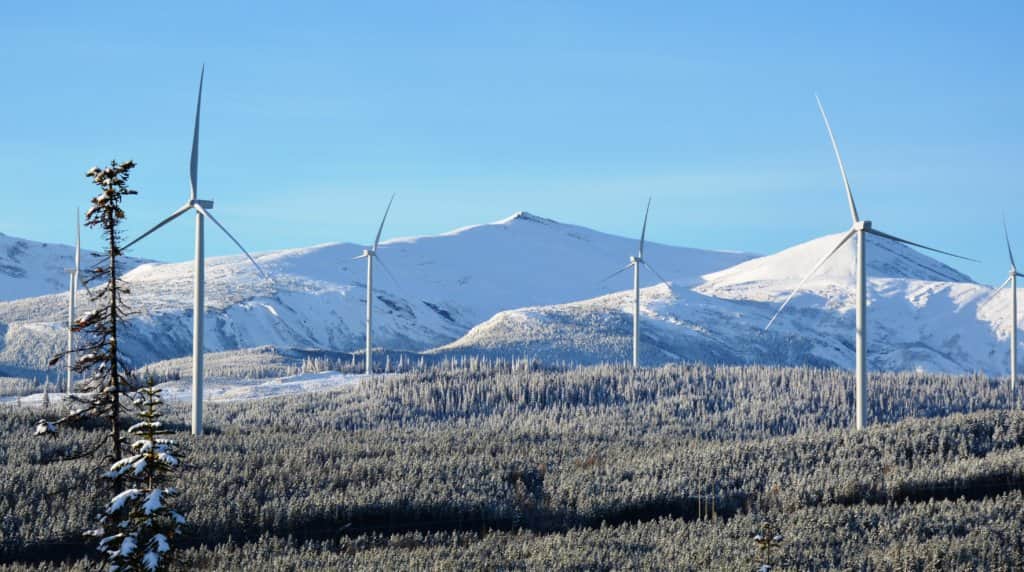When Pattern Development began construction on its 184.6 MW Meikle Wind power project, the largest of its kind in British Columbia, one very observant excavator operator made an unexpected discovery – dinosaur tracks.
What he had uncovered, in fact, were natural casts of a large, quadrupedal ankylosaur in 97-million-year-old rocks of the Dunvegan Formation.
According to Richard McCrea, curator of the Peace Region Palaeontology Research Centre, several dinosaur track-bearing slabs were found in the Meikle project site, just north of Tumbler Ridge, during the road and platform excavations in 2015.
McCrea says that although this track type is not uncommon in western Canada, it is considered very rare globally. Specifically, he explains that the tracks were significant due to their depth and the number of visible digit impressions. Four-toed ankylosaur tracks had previously been found in Canada, but these new tracks outlined only three.
This find, then, added to the lesser-known representative population of three-toed ankylosaur tracks.
Michael Thompson, Pattern Development’s project manager, explains that the province of British Columbia does not have any specific legislation for fossil protection, so the developer immediately contacted an independent environmental monitor, and the site was cordoned off so as to protect the tracks.
“After the initial shock of the find, the team followed the on-site ‘chance encounter’ protocol developed for cultural finds,” he says. “The discovery was quickly assessed by the local paleontologist and identified as a valuable footprint track of an ankylosaurus.”
Construction work in the area was placed temporarily on hold – only for a couple days, Thompson notes – so that the rock, which weighed over a ton, could be safely transported and donated to the Peace Region Palaeontology Research Centre.
All in all, Thompson says half a dozen sets of tracks – the majority being similar ankylosaurus finds – were uncovered in the area over the course of Meikle Wind’s construction process.
As the local paleontologist, McCrea says he personally made several site visits during construction and that he was pleased with how Pattern Development handled the rather unusual situation.
“From time to time, I would get called out to the site to identify and assess any finds that were made, usually by one of the supervisors. If the finds were of interest, the company would make arrangements to transport the slabs to our museum.
“I was very impressed by everyone’s attitude and commitment to do the right thing,” he adds. “I have a great respect for all the people I encountered from the Meikle Wind project.”
Although the findings may have been surprising to some, the wind project’s general location had already proven itself to be a hotbed for palaeontological discoveries.
According to McCrea, these ankylosaurus tracks are just the latest in a series of similar findings in the Tumbler Ridge area, including the bones of other dinosaurs, marine reptiles and fish – and notably, the most complete thalattosaur skeleton ever found in North America.
Having responsibly handled the archaeological discoveries, Pattern Development says the Meikle Wind project has been up and running since Jan. 31, expanding the province’s total installed wind capacity by 37% to reach 673.6 MW.

Photos courtesy of Pattern Development.




